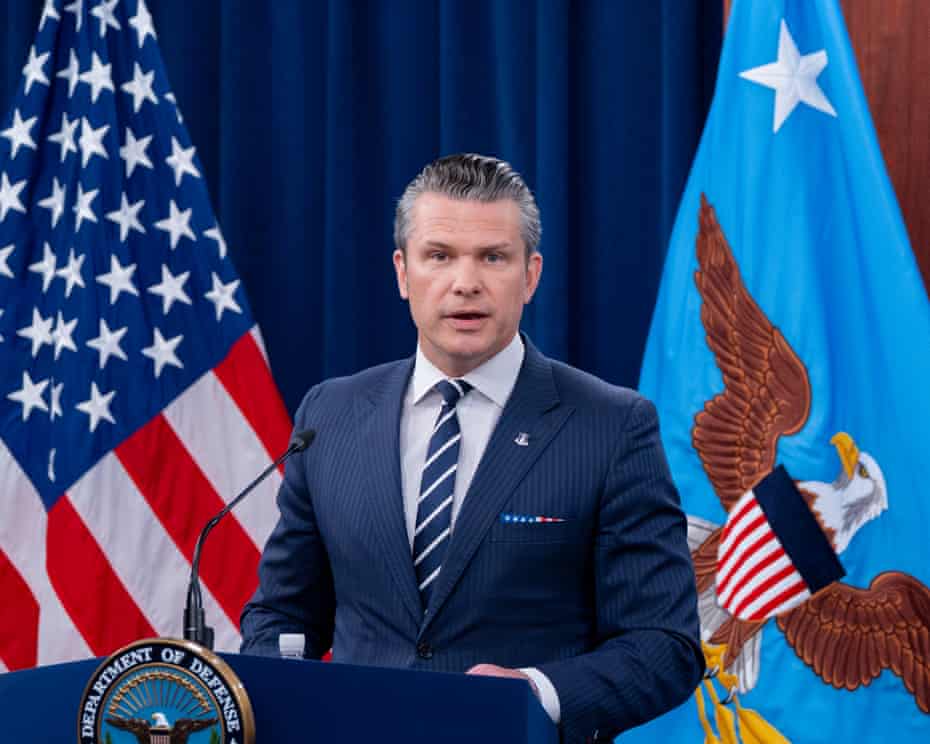The US Defence Secretary, Pete Hegseth, has echoed claims by Donald Trump that a covert American military operation has “obliterated” Iran’s nuclear infrastructure, even as the Pentagon admitted it was too early to assess the full extent of the damage.
Speaking at his first Pentagon press briefing since taking office, Hegseth praised Operation Midnight Hammer, a large-scale strike that reportedly targeted Iran’s most fortified nuclear sites, Natanz, Fordow, and Esfahan, in a coordinated bombing campaign.
“It was an incredible and overwhelming success,” Hegseth declared, dressed in a navy suit with a US flag pocket square. “Thanks to President Trump’s bold and visionary leadership and his commitment to peace through strength, Iran’s nuclear ambitions have been obliterated.”
General Dan Caine, Chairman of the Joint Chiefs of Staff, stood alongside Hegseth and confirmed the operation was conducted primarily by B-2 stealth bombers and advanced fighter jets, launched from Whiteman Air Force Base in Missouri. A decoy formation simultaneously flew over the Pacific to mislead Iranian defences.
The main force of seven B-2 bombers flew non-stop for 18 hours, refuelling mid-air multiple times. According to Caine, the aircraft released 14 GBU-57 “bunker buster” bombs, some of the most powerful non-nuclear weapons in the American arsenal, on the heavily fortified Fordow facility around 2.10 a.m. local time on Saturday morning. Natanz was struck shortly after, while Tomahawk missiles launched from a navy submarine targeted Esfahan.
“We are unaware of any shots fired at the package on the way out,” Caine said. “Iran’s fighters did not fly, and it appears their surface-to-air missile systems never detected us. We retained the element of surprise.”
Despite the confident rhetoric, both Hegseth and Caine stopped short of offering conclusive evidence of destruction. The Fordow site, built deep into a mountain and long considered Iran’s most resilient nuclear installation, remained a particular focus. The Pentagon’s current position is that the facility has been “obliterated”, though independent verification is pending.
In a televised address from the White House on Saturday evening, President Trump warned Tehran that the US was prepared to launch further attacks unless Iran agreed to enter peace negotiations.
Hegseth confirmed that the administration was engaging with Iranian leadership through “public and private channels”, and that American expectations had been clearly communicated. “They understand precisely what the American position is,” he said. “We hope they do what is necessary for peace.”
He further emphasised the psychological effect of the mission. “I think Tehran is certainly calculating the reality that planes flew from the middle of America and Missouri overnight, completely undetected over three of their most highly sensitive sites,” Hegseth remarked. “We believe that will have a clear psychological impact on how they view the future.”
Hegseth also admitted that congressional leaders were only notified after the aircraft had exited Iranian airspace, a move likely to ignite criticism among Democrats. The legality of Trump’s decision to initiate the strike without prior congressional authorisation is expected to become a flashpoint in the coming days.
As tensions flare once again between Washington and Tehran, questions remain about the long-term implications of the operation, not just for Iran’s nuclear ambitions, but for the broader stability of the Middle East.



